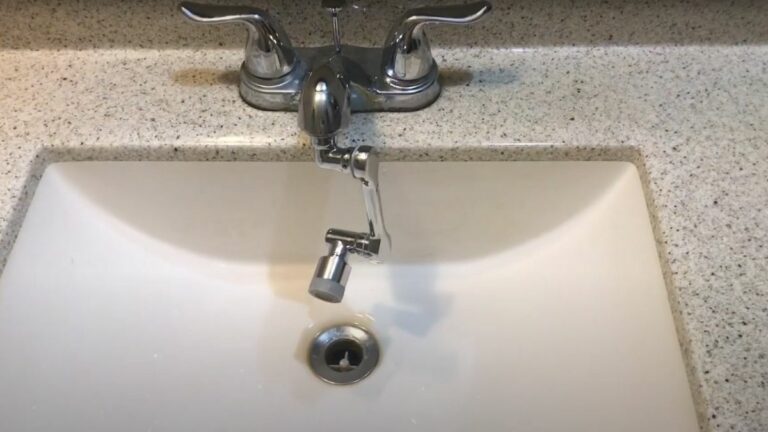How To Repair A Chipped Bathtub
A chipped bathtub can quickly turn from a minor annoyance into an eyesore, impacting both the look and comfort of your bathroom. Luckily, repairing a chipped bathtub is a straightforward project you can handle yourself with the right know-how and materials. Whether your bathtub is acrylic, porcelain, or enamel-coated, this guide will walk you through assessing the damage, preparing the surface, applying the repair, and finishing with a flawless touch. Let’s jump into how you can restore your bathtub’s smooth, polished finish and keep it looking great for years to come.
Assessing The Damage
Before you buy any materials or grab your tools, the first step is to take a good look at the chip itself. Ask yourself: How deep and wide is the chip? Is it just a surface-level scratch or has the porcelain or enamel coating cracked away completely? Small chips less than an inch across with clean edges are ideal candidates for DIY repair. But if you notice rust, large cracks, or layers peeling away, you might be dealing with more extensive damage.
Also, determine the bathtub’s material. Most chips happen on porcelain or acrylic tubs, but repair products vary between these surfaces. Knowing what you’re working with helps you choose the right repair kit, whether it’s a porcelain repair kit, epoxy resin, or acrylic filler. Accurate assessment saves time, money, and frustration down the road.
Gathering Necessary Materials And Tools
Once you understand the scope of the chip and your bathtub type, gather all the materials. Here’s a checklist that will cover most repairs:
- Bathtub repair kit (porcelain enamel or acrylic, depending on your tub)
- Fine-grit sandpaper (around 400-600 grit)
- Cleaning solution (mild detergent or rubbing alcohol)
- Soft cloths or rags
- Putty knife or small spatula
- Painter’s tape
- Primer and touch-up paint (typically included in kits)
- Gloves and safety goggles
You can usually find these kits and tools at hardware stores or online, often tailored specifically for bathtub repairs. Having the right tools handy will make your repair smoother and more professional-looking.
Preparing The Bathtub Surface
Preparation is key to a long-lasting repair. Start by thoroughly cleaning the chipped area to remove any dirt, grime, soap scum, or oils that might prevent the repair compound from adhering properly. Use a mild detergent or rubbing alcohol to clean the surface, then let it dry completely.
Next, use painter’s tape to mask off the area surrounding the chip. This protects the rest of your tub from accidental smudges or sanding damage. Carefully sand the chipped edges with fine-grit sandpaper to smooth out any roughness or sharp fragments, promoting better adhesion. Wipe away any dust from sanding with a damp cloth, then allow the surface to dry once more before proceeding.
Step-By-Step Repair Process
Applying The Repair Compound
Mix your repair compound according to the kit instructions. Using a putty knife or a small spatula, apply it gently but firmly into the chipped area. Fill the chip slightly above the surface to allow for shrinkage as it dries. It’s better to build up in layers if the chip is deep, letting each layer dry before applying the next.
Sanding And Smoothing The Repaired Area
After the compound has fully cured, typically 24 hours, carefully sand the repair until it’s flush with the rest of the bathtub surface. Use fine-grit sandpaper and gentle pressure to avoid scratching nearby areas. This step ensures your patch is level and indistinguishable from the original finish.
Finishing Touches And Painting
Once smooth, clean the area again to remove sanding dust. Apply any primer included in your kit, then use the touch-up paint to blend the repair with your tub’s existing color. Thin, even coats work best. Allow each coat to dry as per instructions. Patience here pays off with a flawless, professional look that lasts.
Preventing Future Bathtub Damage
To keep your bathtub chip-free moving forward, consider these practical tips:
- Avoid dropping heavy or sharp objects in the tub.
- Use a non-slip mat instead of adhesive stickers that can damage surface.
- Clean regularly with mild, non-abrasive cleaners to maintain the finish.
- If your tub is older, apply a protective wax designed for porcelain or acrylic surfaces.
Taking these precautions will reduce the risk of chips and prolong your tub’s pristine appearance.
When To Call A Professional
Some damage demands more than a DIY fix. If your chip is large, involves deep cracks, rust, or if the bathtub surface is extensively damaged, it’s wise to consult a professional. Professionals have advanced tools and materials to restore your bathtub seamlessly, often with color matching that blends perfectly with your existing finish.
Also, if you’ve tried fixing a chip and it keeps resurfacing or worsening, professional help can identify underlying issues you might have missed. Remember, not all repairs are created equal, and sometimes investing in expert care saves you from costly replacements later on.
Conclusion
Repairing a chipped bathtub yourself is well within your reach and can restore your bathroom’s aesthetic and functionality in just a few straightforward steps. By assessing the damage carefully, using the right materials, and following a methodical repair process, you can achieve professional-looking results without hassle. Plus, with a bit of prevention, you’ll keep your tub looking fresh and chip-free for years to come. So next time you spot a chip, don’t panic, grab your repair kit, and get to work bringing your bathtub back to life.


